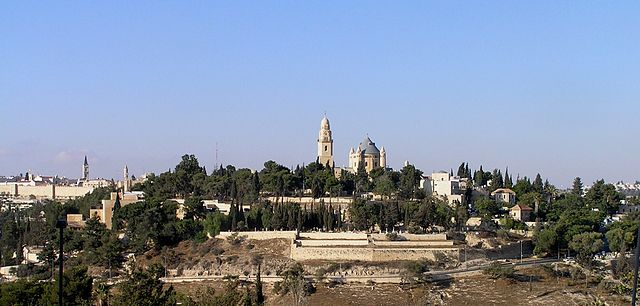Mount Zion

Mount Zion, the highest point in ancient Jerusalem, is the broad hill south of the Old City’s Armenian Quarter.
Also called Sion, its name in Old Testament times became projected into a metaphoric symbol for the whole city and the Promised Land.
Several important events in the early Christian Church are likely to have taken place on Mount Zion:
• The Last Supper of Jesus and his disciples, and the coming of the Holy Spirit on the disciples, both believed to have been on the site of the Cenacle;
• The appearance of Jesus before the high priest Caiaphas, believed to have been at the site of the Church of St Peter in Gallicantu;
• The “falling asleep” of the Virgin Mary, believed to have occurred at the site of the Church of the Dormition.
• The Council of Jerusalem, around AD 50, in which the early Church debated the status of converted gentiles (Acts 15:1-29), perhaps also on the site of the Cenacle.
The mountain that moved
In the Old Testament period, Zion was the eastern fortress that King David captured from the Jebusites and named the City of David (2 Samuel 5:6-9).
A psalmist described Mount Zion as God’s “holy mountain, beautiful in elevation . . . the joy of all the earth” (Psalm 48).
And again, “Those who trust in the Lord are like Mount Zion, which cannot be moved, but abides forever” (Psalm 125).
Ironically, by the time this psalm was composed, the name of Mount Zion had already moved from its original location at the Jebusite fortress — and would move again.
First, perhaps at the time Solomon built his Temple, the Temple Mount came to be called Mount Zion. Then in the first century AD, following the Roman destruction of Jerusalem, the name was transferred to its present location across the Tyropoeon Valley.
Source : seetheholyland.net
https://www.youtube.com/watch?v=LYNqLZHZgC8


Rate this article